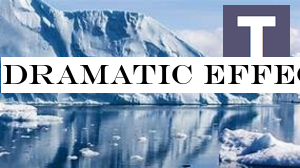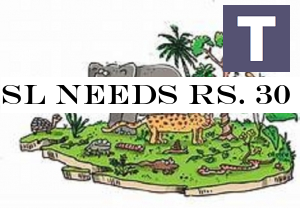Music
Trailers
DailyVideos
India
Pakistan
Afghanistan
Bangladesh
Srilanka
Nepal
Thailand
StockMarket
Business
Technology
Startup
Trending Videos
Coupons
Football
Search
Download App in Playstore
Download App
Best Collections
Srilanka

Railway trade unions launched a 48-hour token strike from midnight yesterday after their discussions with Finance Minister Mangala Samaraweera failed.Earlier, they had decided to launch a 48-hour token strike from Wednesday night, but it was postponed till 2 pm yesterday till their discussion with the Finance Minister.
- Details
- Category: Srilanka
Read more: Railway unions strike
Write comment (92 Comments)
The Producer Price Index (PPI) of all economic activities covering: agriculture, manufacturing and electricity and water supply for the month of April was 139.1 while the annual growth rate for the month of April was 4.5 per cent, according to Department of Census and Statistics.
- Details
- Category: Srilanka
Read more: Producer Price Index grows 4.5 %
Write comment (95 Comments)
The Buddhasasana and Wayamba Development Ministry has taken measures to implement a three-pronged programme, Shasana Suraksha to protect and foster the Buddha Sasana, said Buddhasasana and Wayamba Development Minister Gamini Jayawickrama Perera. Speaking at a media conference yesterday at the Government Information Department, Minister Perera said the Shasana Suraksha programme consists of the introduction of a life insurance scheme for Bhikkus (Budu Puth Suraksha), implementation of a programme to provide assistance for the parents of Bhikkus (Budu Puth Mau Piya Suraksha) and development of facilities at temples in rural areas (Bodu Arama Suraksha).
- Details
- Category: Srilanka
Read more: Budu Puth,Mau Piya andArama Suraksha to foster Buddha Sasana
Write comment (96 Comments)
In 2012, Sue Natali arrived in Duvanny Yar, Siberia, for the first time. Then a postdoctoral research fellow studying the effects of thawing permafrost due to climate change, she had seen photos of this site many times. Rapid thawing at Duvanny Yar had caused a massive ground collapse & a &mega slump& & like a giant sinkhole in the middle of the Siberian tundra. But nothing had prepared her for seeing it in person.
As you walk along you see what look like logs poking out the permafrost. But they aren&t logs, they are the bones of mammoths and other Pleistocene animals & Sue Natali
&It was incredible, really incredible&, she recalls while speaking to me from The Woods Hole Research Center, Massachusetts, where she is an associate scientist. &I still get chills when I think about it… I just couldn&t believe the magnitude: collapsing cliffs the size of multi-storey buildings … and as you walk along you see what look like logs poking out the permafrost. But they aren&t logs, they are the bones of mammoths and other Pleistocene animals.&
What Natali describes is the visible, dramatic effects of a rapidly warming Arctic. The permafrost & up until now, permanently frozen land and soil & is thawing out, and revealing its hidden secrets. Alongside Pleistocene fossils are massive carbon and methane emissions, toxic mercury, and ancient diseases.
(Credit: Sue Natali)The rapid thawing of permafrost causes "mega slumps" that puncture the landscape like the holes in swiss cheese (Credit: Sue Natali)The organic-rich permafrost holds an estimated 1,500 billion tonnes of carbon. &Thatabout twice as much carbon in the atmosphere, and three times as much carbon than that stored in all the worldforests&, says Natali. She explains that between 30% and 70% of the permafrost may melt before 2100, depending on how effectively we respond to climate change. &The 70% is business as usual, if we continue to burn fossil fuels at our current rate, and 30% is if we vastly reduce our fossil fuel emissions… Of the 30-70% that thaws, the carbon locked up in organic matter will begin to be broken down by microbes, they use it as fuel or energy, and they release it as CO2 or methane.&
You might also enjoy:
The outrageous plan to haul icebergs to AfricaHow the worldbiggest cities are fighting smogWhy Britainrains can&t sustain its thirstAround 10% of the carbon that does defrost will probably be released as CO2, amounting to 130-150 billion tonnes. That is equivalent to the current rate of total US emissions, every year until 2100. Melting permafrost effectively introduces a new country at number two on the highest emitters list, and one that isn&t accounted for in current IPCC models. &People talk about a carbon bomb,& says Natali. &In geological timescales this is not a slow release. It is a pool of carbon that is locked away and is not accounted for in the carbon budget to keep rises below two degrees (Celsius).&
The Northern Hemisphere winter of 2018/2019 was dominated by headlines of the &polar vortex&, as temperatures plummeted unusually far south into North America. In South Bend, Indiana, it reached -29C in January 2019, almost twice as low as the cityprevious record set in 1936. What such stories masked, however, was that the opposite was happening in the far North, beyond the Arctic circle. January 2019 also saw Arctic sea ice average just 13.56 million square kilometres (5.24 million square miles), some 860,000 square kilometres (332,000 square miles) below the 1981 to 2010 long-term average, and only slightly above the record low reached in January 2018.
(Credit: Alamy)Melting ice can release methane, which will exacerbate global warming (Credit: Alamy)In November, when temperatures should have been -25C, a temperature of 1.2C above freezing was recorded at the North Pole. The Arctic is warming twice as fast as the rest of the world (in part due to the loss of solar reflectivity).
&We are seeing a big increase in the thaw of permafrost&, confirms Emily Osborne, program manager for the Arctic Research Program, NOAA, and editor of the Arctic Report Card, an annual peer-reviewed environmental study of the Arctic. As a direct result of rising air temperatures, she says, the permafrost is thawing and &the landscape is physically crumbling as a result… things are changing so fast, and in ways that researchers hadn&t even anticipated.&
The headline of the 2017 Arctic Report Card pulled no punches: &Arctic shows no sign of returning to a reliably frozen region&. One paper co-authored by Hanne Christiansen, professor and vice dean of education at University Centre Svalbard, Norway, studied permafrost temperatures at a depth of 20 metres (that's 65ft, far enough down not to be affected by short-term seasonal changes) and found temperatures had risen by up to 0.7C since 2000. Christiansen, who is also president of the International Permafrost Association, tells me, &temperatures are increasing inside the permafrost at relatively high speed… then, of course, what was permanently frozen before can become released.& In 2016, the autumn temperatures in Svalbard remained above zero throughout November, &the first time this has happened in the records that we have, going back to 1898&, says Christiansen. &Then large amounts of rain came & the precipitation here is typically snow… we had mudslides crossing roads for 100s of metres… we had to evacuate some parts of the population.&
(Credit: Getty Images)The melting permafrost is transforming Alaska's landscapes (Credit: Alamy)In some places in the Alaskan Arctic, you fly over a swiss cheese of land and lakes formed by ground collapse & Sue Natali
The rapid change in North American permafrost is equally alarming. &In some places in the Alaskan Arctic, you fly over a swiss cheese of land and lakes formed by ground collapse,& says Natali, whose fieldwork has moved from Siberia to Alaska. &Water that was close to the surface now becomes a pond.& Many of these ponds are bubbling with methane, as microbes suddenly find themselves with a feast of ancient organic matter to munch on, releasing methane as a by-product. &We often walk across the lakes because itso shallow and itlike you&re in a hot tub in some places, there is so much bubbling,& says Natali.
(Credit: Alamy)The melting permafrost released anthrax in Siberia (Credit: Alamy)But methane and CO2 are not the only things being released from the once frozen ground. In the summer of 2016, a group of nomadic reindeer herders began falling sick from a mysterious illness. Rumours began circling of the &Siberian plague&, last seen in the region in 1941. When a young boy and 2,500 reindeer died, the disease was identified: anthrax. Its origin was a defrosting reindeer carcass, a victim of an anthrax outbreak 75 years previously. The 2018 Arctic report card speculates that, &diseases like the Spanish flu, smallpox or the plague that have been wiped out might be frozen in the permafrost.& A French study in 2014 took a 30,000 year-old virus frozen within permafrost, and warmed it back up in the lab. It promptly came back to life, 300 centuries later. (To read more, see BBC Earthpiece on the diseases hidden in ice.)
Adding to this apocalyptic vision, in 2016 the Doomsday Vault & a sub-permafrost facility in Arctic Norway, which safeguards millions of crop seeds for perpetuity & was breached with meltwater. And listed amongst the membership of The Global Terrestrial Network for Permafrost, is Swedish Nuclear Waste Management who presumably also rely on a permanently frozen permafrost (when BBC Future approached them for comment on this point, they did not respond).
Long-preserved human archaeology may also be emerging, but just as quickly lost. A frozen Palaeo-Eskimo site in Greenland, preserved for some 4,000 years, is at risk of being washed away. This is just one of an estimated 180,000 archaeological sites preserved in the permafrost, often with soft tissues and clothing that uniquely remain intact but would rot quickly if exposed. Adam Markham, of the Union of Concerned Scientists has said, &with rapid, human-caused climate change, many sites or the artefacts they contain, will be lost before they have been discovered.&
More modern (and unwanted) human detritus will, however, not rot away: marine microplastics. Due to circular global marine currents, much plastic waste ends up in the Arctic, where it becomes frozen in sea ice or permafrost. A recent study of marine micro-particles demonstrated that concentrations were higher in the Arctic Basin than all other ocean basins in the world. Microplastic concentrations in the Greenland Sea doubled between 2004 and 2015. &Scientists are finding that those microplastics are accumulating across the entire ocean and being dumped into the Arctic&, explains Osborne. &This is something we didn&t [previously] realise was a problem. What scientists are trying to find out now is the composition of these microplastics, what sort of fish are feeding on these… and whether we are essentially eating microplastics through eating these fish.&
(Credit: Alamy)In 2016 the Doomsday Vault & a sub-permafrost facility in Arctic Norway, which safeguards millions of crop seeds for perpetuity & was breached with meltwater (Credit: Alamy)Mercury is also entering the food chain, thanks to thawing permafrost. The Arctic is home to the most mercury on the planet. The US Geological Survey estimates therea total of 1,656,000 tonnes of mercury trapped in polar ice and permafrost: roughly twice the global amount in all other soils, oceans, and atmosphere. Natali explains that, &mercury often binds up with organic material in places where you have high organic matter content… organismbodies don&t remove it, so it bio-accumulates up the food web. Permafrost is almost the perfect storm & you have a lot of mercury in permafrost, it is released into wetland systems, those are the right environment for organisms to take them up, and then [it] heads up the food web. Thata concern for wildlife, people, and the commercial fishing industry.&
Are there some positives of a thawing Arctic Could a greener Arctic start to see more trees and vegetation take root, sequestering more carbon and offering new grazing land for animals Osborne agrees that &the Arctic is greening&. But she adds that studies of animal populations actually suggest that, &warmer temperatures also increase the prevalence of viruses and disease, so we&re seeing a lot more caribou and reindeer becoming more sickly as a result of this warming climate… it is just not an environment that is suited to thrive at these warmer temperatures.& Natali also says that many areas are experiencing &Tundra browning&: the higher temperatures lead surface water to evaporate into the atmosphere, causing plants to die off. Other areas are experiencing sudden flooding due to the ground collapsing. &Itnot happening in 2100 or 2050, itnow&, says Natali. &You hear people say ‘we used to pick blueberries over there&, and you look over there and ita wetland.&
Natali doesn&t want to end the conversation on a downer. There is a lot we can do, she says. The fate of the Arctic is not a foregone conclusion: &The actions taken by the international community will have a substantial impact on just how much carbon will be released and how much of the permafrost will thaw. We need to keep as much of the permafrost as we can frozen. And we do have some control of that.& Our emissions cannot remain &business as usual&. The Arctic depends on it. And we depend on the Arctic.dramatic effects of a rapidly warming Arcticdramatic effects of a rapidly warming Arctic
- Details
- Category: Srilanka
Read more: Remarkable impacts of a quickly warming Arctic
Write comment (95 Comments)
Sri Lanka needs to invest Rs. 30 billion over the next five years to achieve national biodiversity targets and to avoid future expenses related to biodiversity restoration and management, according to the Roadmap for Sustainable Finance report. The country may face a 1.2 percent loss of annual GDP by 2050 if effective measures are not taken to address climate change related issues, International Finance Corporation, Country officer for Sri Lanka and the Maldives Victor Anthonypillai said at the launch of the report by Central Bank of Sri Lanka (CBSL) in Colombo yesterday.
- Details
- Category: Srilanka
Read more: SL needs Rs. 30 bn to achieve biodiversity targets
Write comment (91 Comments)
President Maithripala Sirisena has ordered the authorities to expedite probes into the suspects arrested for minor crimes under the Prevention of Terrorism Act (PTA) after the in the aftermath of Easter Sunday attacks, the PresidentMedia Division stated. The President has further given instructions to release the individuals who are not linked to terrorism
- Details
- Category: Srilanka
Read more: President orders to expedite probes into suspects arrested for minor crimes under PTA
Write comment (92 Comments)Page 326 of 392

 16
16














